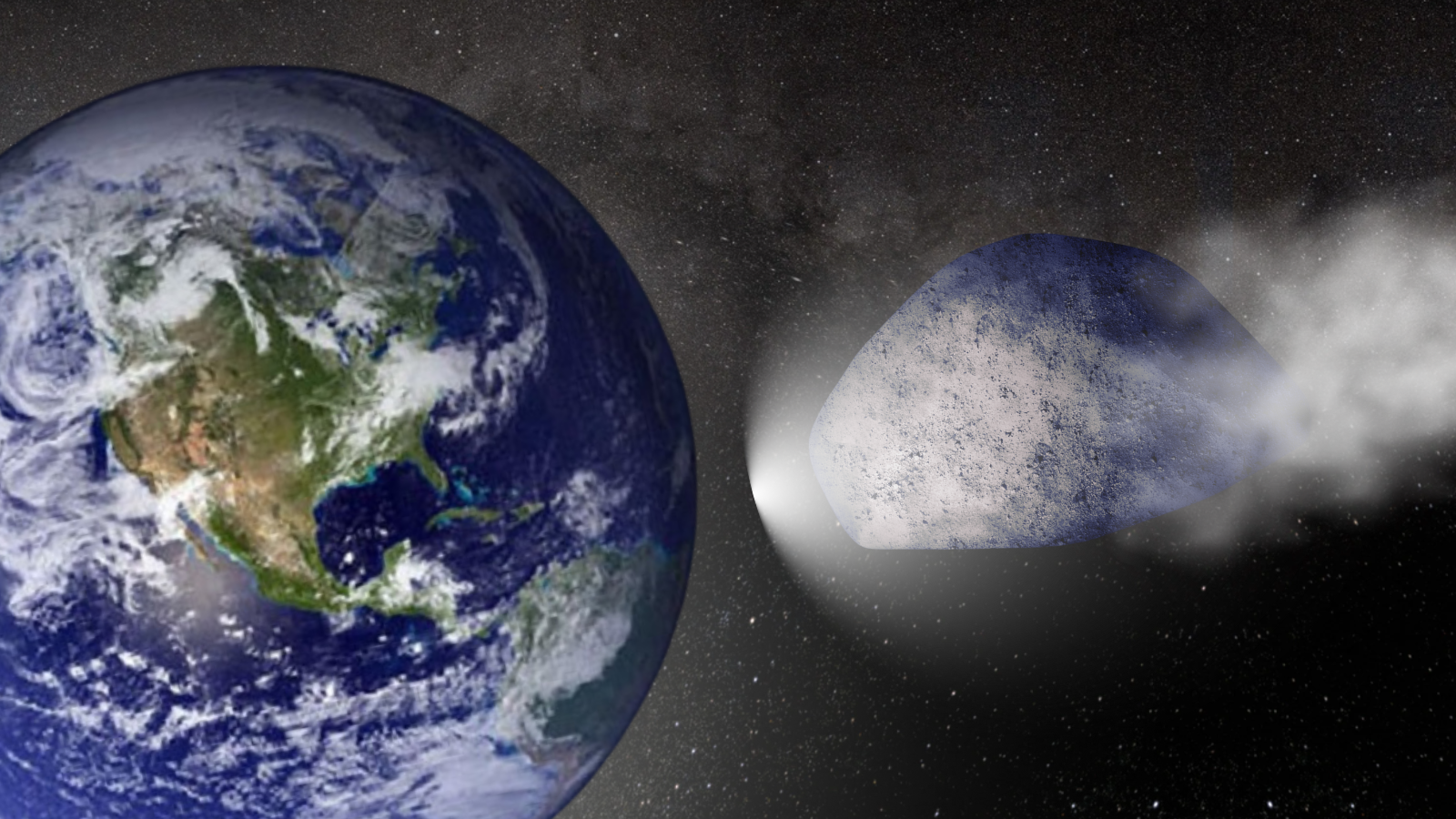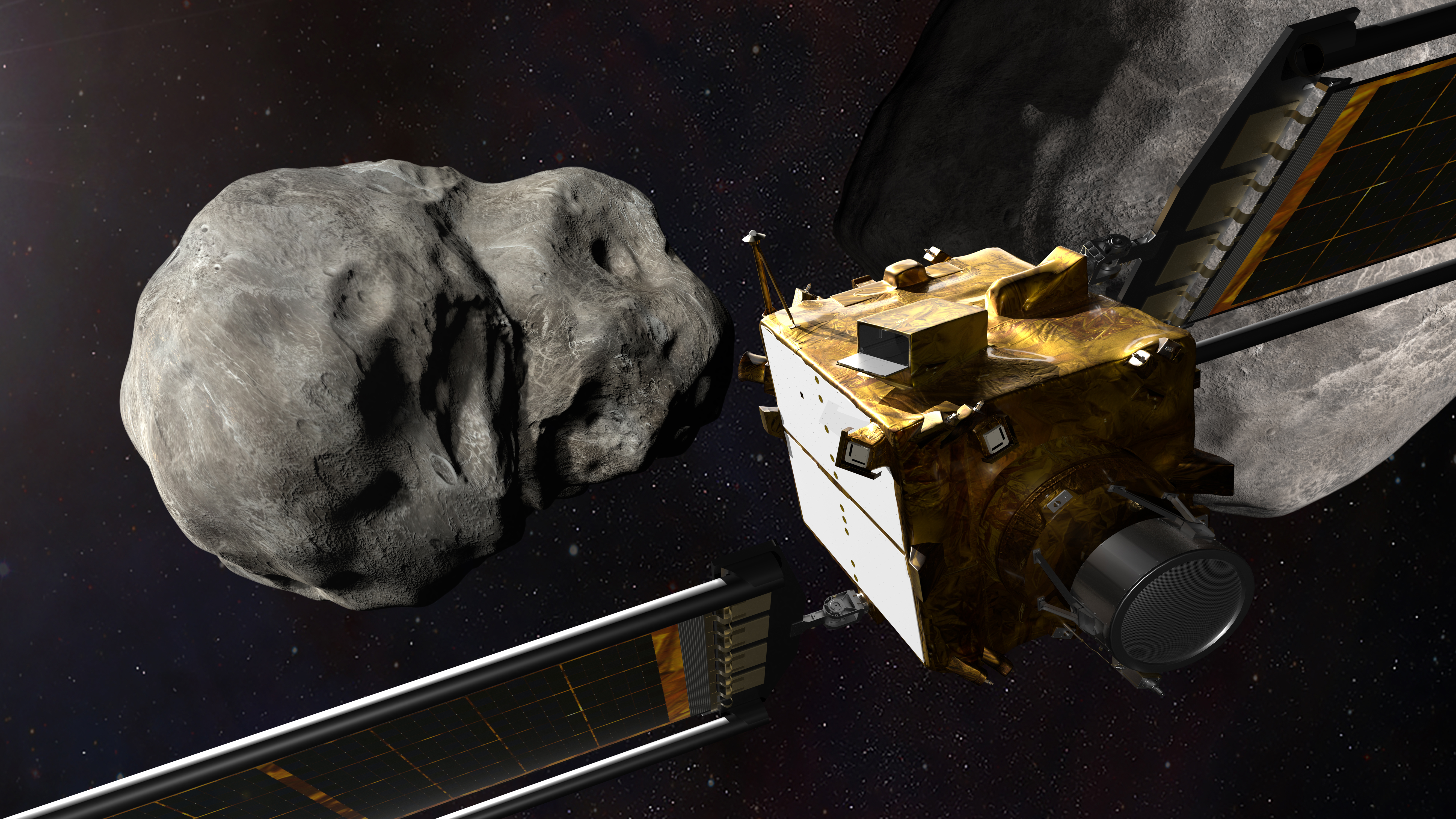
On Friday, 13, 2029, Earth will have a fascinating and intimidating visitor in the form of the "God of Destruction" asteroid Apophis. The asteroid — named after the Egyptian serpent god of chaos and destruction Apep — is so large and will pass within 19,000 miles (30,600 kilometers) of Earth, so close to our planet that it could be visible to the naked eye.
New research has suggested that if other much smaller space rocks hit Apophis, the asteroid, which is almost as wide as the Empire State Building is tall, could be redirected, and Earth might not be narrowly missed by it during subsequent passages or in extreme circumstances, even during the 2029 passage. But don't panic just yet.
Research author Paul Wiegert, an astronomer at the University of Western Ontario, told Space.com that the odds of a dangerous asteroid strike on Apophis are very low. "The odds are essentially 1 in a million that an asteroid strike could deflect Apophis enough to put it in danger of a future post-2029 collision, and only 1 in a billion that it could send Apophis colliding with Earth in 2029," he said.
"I calculated the odds of asteroid Apophis, whose current path is computed to take it near but safely past our planet in 2029, being deflected onto a more dangerous path by an unexpected small asteroid impact," Wiegert explained. "These are the same kind of small asteroids that occasionally appear in our atmosphere as 'shooting stars' or 'fireballs' and could strike Apophis just as unexpectedly."
Wiegert explained that in the research, he questioned whether an asteroid would strike during the period from 2021 to 2027 when our telescopes couldn't observe Apophis and if this could deflect it enough to make it dangerous.
"Asteroid Apophis is essentially unobservable from now until 2027 because it is in the daytime sky, and so it could be hit without us being immediately aware of the event," he continued.
A chaotic event could mean the rise of Apophis
Discovered in 2004, Apophis (full designation Apophis 99942) immediately rose to the top of tables that measure the risk of so-called potentially hazardous asteroids (PHAs) asteroids with widths of 460 feet (140 meters) or more that come within 20 lunar distances of Earth.
Both the size of Apophis and its trajectory saw it remain at the top of both the European Space Agency's (ESA's) "impact risk list" of PHAs and NASA's Sentry Risk Table for almost two decades.
That was until a close flyby of the asteroid in March 2021 allowed NASA scientists to determine Apophis actually won't hit the Earth for at least 100 years.
Now, this new research shows that chance encounters with other space rocks could redirect the 1,000-foot-wide (305-meter-wide) Apophis to put it on a collision course with Earth in 2029 or later, meaning it could rocket back to the top of the risk tables.
Wiegart calculated the effect that objects of different sizes would have if they struck Apophis and then used the number of objects of these sizes that strike Earth each year to determine the probability of such an impact.
"An asteroid about 60 centimeters (24 inches) across could, if it struck Apophis from exactly the right direction, put Apophis onto a post-2029 collision course. But it would take a 3 meter (10 foot) diameter asteroid to strike Apophis, again, in just the right direction, to put in danger of a collision in 2029," Wiegart said. "These kinds of collisions are extremely rare."
When considering the angle necessary to divert Apophis so that it could strike Earth on a future passage, Wiegart found the chance of the asteroid being diverted to hit our planet after 2029 to be 1 in 1 million. The chances of a roughly 3-meter-wide asteroid hitting Apophis and putting it on a collision course with Earth in 2029 were 1 in 2 billion.

These low odds are fortunate considering the huge damage Apophis would cause were it to strike Earth. The Planetary Society estimated that if Apophis were to hit Earth it could release energy equal to more than 1,000 megatons of TNT, equivalent to the detonation of tens or even hundreds of nuclear weapons.
This could spread devastation across a radius of hundreds of miles. Even though it won't come close to the devastation caused 65,000,000 years ago by the asteroid that wiped out the dinosaurs and two-thirds of all species on Earth, millions of people would die if Apophis hit a highly populated metropolitan area.
If we discover Apophis is on a collision course with Earth during its next passages in 2029, 2036, and 2068, we would have some options to attempt to divert it. For instance, just as a small impact could shift the God of Destruction space rock toward Earth, another small collision could reorientate its trajectory away again if space agencies had enough warning.
In 2022, NASA tried out this idea, striking the asteroid system Dimorphos and Didymos with the Double Asteroid Redirection Test (DART) impactor and measuring the change in its motion.
"It is possible that a mission like DART could be used to divert Apophis back onto a safe path, but exactly how and if this would work has yet to be worked out," Wiegart said.
Other diversions range from the forceful, such as hitting an asteroid with a nuclear weapon, to the sublime, such as painting one side of an asteroid black, causing it to absorb more solar radiation, shifting its center of mass, and altering its trajectory. These methods are well-founded scientifically but are yet to be tested.
"It's difficult to say what other diversion methods would work, but scientists are thinking hard about our options," Wiegart said.
Though Apophis is unlikely to live up to its fearsome name in 2029 by impacting Earth, its scientific impact will be immeasurable. Plans are already being hatched to use spacecraft and satellites to rendezvous with the asteroid as it heads toward its closest approach to our planet.
"Apophis' upcoming close pass in 2029 is a natural milestone for our planet, as we move into a time where we as a global community have the ability to avoid disastrous asteroid impacts like those that may have extinguished the dinosaurs," Wiegart concluded. "The astronomical community as a whole is continuing to think about dangerous asteroids like Apophis as well as possible next steps."
Wiegart's Apophis research was published in The Planetary Science Journal.







